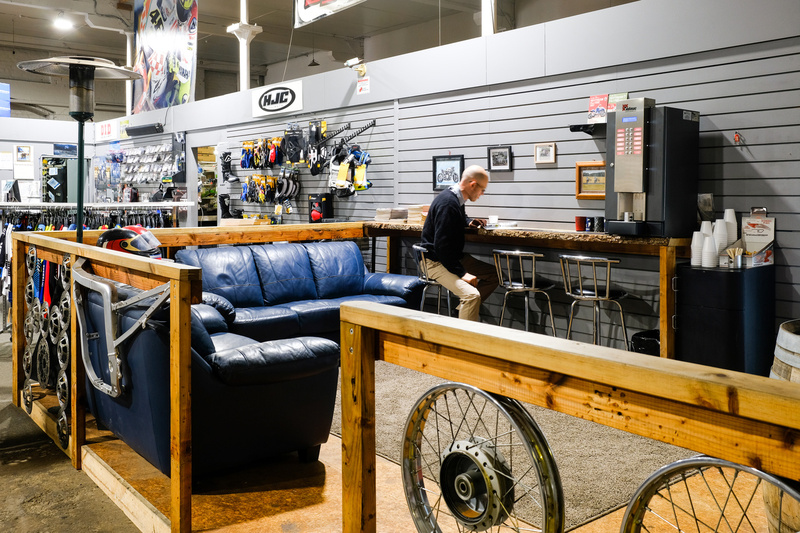Discover High Quality Moto Parts NZ for All Your Motorcycle Needs
Discover High Quality Moto Parts NZ for All Your Motorcycle Needs
Blog Article
Understanding the Important Components of a Motorbike: A Comprehensive Overview for Enthusiasts
For motorbike fanatics looking to raise their riding experience and guarantee their bikes run efficiently, understanding the crucial components of a bike is critical. Each component, from the engine's elaborate functions to the vital duty of the stopping systems, not only affects performance but additionally safety and security and convenience.
Engine Elements

The camshaft plays an essential duty in controlling the timing of the engine's shutoffs, ensuring the exact opening and closing necessary for effective gas and air consumption, in addition to exhaust expulsion. This timing is critical to preserving optimum engine performance and effectiveness. In addition, the carburetor or fuel injection system, depending on the motorbike model, is in charge of blending air with fuel in the right proportion for combustion.
The air conditioning system, either air or liquid-based, works to preserve the engine's temperature within operational limitations, avoiding overheating and ensuring long life - motox parts nz. Each element, carefully made and incorporated, contributes to the smooth procedure of the engine, defining the bike's power output and general performance
Transmission System
Important to the bike's capability, the transmission system ensures efficient power transfer from the engine to the wheels. This system comprises several vital elements, consisting of the clutch, transmission, and final drive, each playing a crucial function in equating the engine's power right into activity. The clutch, generally operated by a hand lever, serves to disengage the engine and engage from the transmission, permitting smooth equipment adjustments and regulated velocity.
The transmission, often referred to as the transmission proper, contains a set of equipments that cyclists can by hand move with to adjust the bike's rate and torque result. These equipments are set up in a sequence that allows the motorcycle to accelerate efficiently and preserve optimal engine performance throughout different speeds. Many motorcycles make use of a consecutive gearbox, requiring the rider to change gears in a predetermined order.
Braking Mechanisms
While recognizing the transmission system is key to taking advantage of a bike's power, similarly essential is the ability to manage and stop that power properly, which is where stopping devices come into play. Brakes are crucial for safety and security and efficiency, providing the cyclist with the necessary control to navigate different terrains and problems. Generally, bikes feature 2 kinds of stopping systems: disc brakes and drum brakes.
Disc brakes are much more widespread in contemporary bikes because of their superior performance. They are composed of a brake disc, caliper, and pads. When activated, the caliper presses the brake pads versus the spinning disc, transforming kinetic power into warmth, thereby slowing down the wheel. This system supplies much better warmth dissipation, consistent performance, and boosted stopping power, particularly in damp conditions.
On the other hand, drum brakes, though much less common, are still found in some motorbikes. They work by pushing brake footwear against the inner surface of a drum connected to the wheel. While usually much less effective in warm dissipation and quiting power, drum brakes are less complex and extra cost-effective.
Comprehending these braking systems' nuances enables motorcyclists to preserve their motorbikes appropriately and value the design that makes certain secure and reliable quiting.
Suspension and Guiding
Suspension and guiding systems are crucial elements that dramatically affect a motorbike's handling and experience comfort. The suspension system, including forks at the front and shock absorbers at the rear, absorbs roadway abnormalities, boosting security and control. Front forks, upside down or normally telescopic, compress and rebound to alleviate effects, while rear shock absorbers maintain tire call with the road, essential for traction and safety.
Guiding, focused around the handlebars, links the biker to the motorcycle's directional control. The steering head bearings ensure smooth procedure, permitting exact ability to move. Proper alignment and upkeep of these bearings are important for predictable guiding action and decreasing rider exhaustion.
The suspension's adjustability is one more critical facet; preload, damping, and rebound setups enable modification to fit numerous riding conditions and designs. This versatility is important for optimizing performance, whether browsing urban roads or tackling tough trails. Technologies like electronic shock absorber provide real-time changes, improving adventure high quality throughout diverse surfaces.

Electric Systems
After making sure a regulated and smooth adventure with reliable suspension and guiding systems, attention transforms to the electric systems, a pivotal element of modern-day motorcycles. These systems play a vital duty not only in starting the engine however additionally in powering various elements that boost the functionality and security of the bike.
At the heart of a motorcycle's electric system is the battery, which stores electric power necessary for starting the engine and powering supporting systems - motox parts nz. The alternator or generator, coupled with the rectifier-regulator, makes sure the battery continues to be billed while the bike functions, converting power right into powersports repair near me electric energy and maintaining voltage levels
The ignition system, another important component, is in charge of firing up the air-fuel blend in the engine's cyndrical tubes. Modern motorbikes usually make use of a digital ignition system, supplying greater efficiency and reliability contrasted to typical systems.
Lights systems, consisting of fronts lights, tail lights, and indications, are likewise crucial, making certain presence and safety read and security for the motorcyclist. Extra electronic components such as sensors, control devices, and presents add to innovative attributes like gas injection management, anti-lock stopping systems (ABDOMINAL MUSCLE), and digital dashboards, further boosting the riding experience.
Verdict
A detailed understanding of a motorcycle's crucial elements, consisting of the engine, transmission system, braking devices, suspension, steering, and electric systems, is important for fanatics aiming to maximize safety, efficiency, and convenience. Proficiency of these components allows for notified decisions regarding maintenance and upgrades, ultimately improving the riding experience. By incorporating this knowledge, motorcyclists can guarantee their motorcycles run at peak performance and reliability, thus making the most of both satisfaction and longevity of their cars.
For motorbike fanatics looking to boost their riding experience and ensure their bikes run smoothly, comprehending the essential components of a motorbike see this page is extremely important.Integral to the motorbike's performance, the transmission system makes certain efficient power transfer from the engine to the wheels.While comprehending the transmission system is vital to harnessing a motorbike's power, similarly important is the ability to manage and quit that power efficiently, which is where braking devices come into play. Commonly, motorcycles feature 2 kinds of braking systems: disc brakes and drum brakes.
A thorough comprehension of a bike's vital parts, including the engine, transmission system, stopping mechanisms, suspension, guiding, and electric systems, is essential for fanatics aiming to enhance convenience, performance, and safety.
Report this page